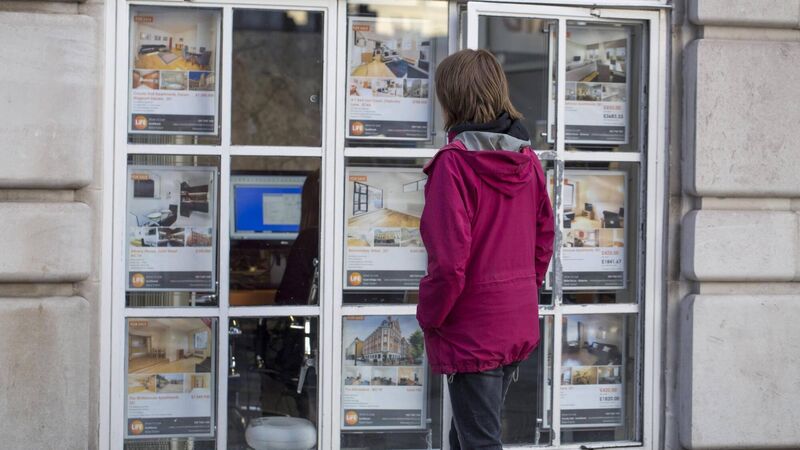John Hearne: Mortgage holders are going further and further to find a home

Report shows 24% of first-time buyer mortgage borrowers are now moving county to buy or build their first home, up from 19% in 2021.
Dublin borrowers accounted for more than 40% of first-time buyer mortgages in Kildare, Wicklow and Meath in 2023, according to the latest Banking and Payments Federation (BPFI) mortgage report.
The report also shows Dublin borrowers accounted for an even higher share of mortgages for new semi-detached or terraced houses, ranging from 55% in Meath to 60% in Kildare.
This latest report in the series, which looks at the profile of borrowers, their loans and property types on a national and regional basis, shows on a national level, 24% of first-time buyer mortgage borrowers are now moving county to buy or build their first home, up from 19% in 2021. This trend is most evident in Leinster, where at least half of first-time buyers are cross-county borrowers.
Dublin borrowers are not restricting themselves to counties in the capital’s hinterland either. They accounted for a tenth of first-time buyer mortgages in 11 other counties in 2023, from Cavan in the north to Wexford in the south.
You can see similar patterns in other counties too. Limerick borrowers accounted for 13% of first-time buyer mortgages in Clare, while Kildare borrowers represented 11% of first-time buyer mortgages in Laois.
BPFI chief executive Brian Hayes says the increased prevalence of buying or building outside your own county reflects increased competition between buyers in the property market and huge demand from first-time buyers.
He believes this cohort will look further afield and become more willing to move county to buy their first home.
Chairperson of Irish Mortgage Advisors Trevor Grant points out cross-county migration is something that gained momentum after covid hit in 2020.

“A marked shift in work practices for people with the advent of a new era of working from home, coupled with the uptick in house prices seen in recent years and the shortage of new homes, have all culminated in a growing cohort of mortgage holders moving out of the cities and into commuter belt counties — and in many cases more rural areas too.”
He says the drivers behind this movement are varied. Some people are moving out of a desire to live where they are from originally, or because they want to live beside the sea, while others simply have very little choice because they are priced out of the markets in busier, more populated areas.
Mortgage brokers — who generate almost half of mortgage completions — have seen the cross-county migration trend gain momentum over the past six months.
“In the main, with cross-county migration, we are seeing more examples of positive than negative buyer experience — with people often getting more value for money than would be the case if they were to buy in the capital," Mr Grant says.
"Furthermore, many are getting a quality of lifestyle that they may not have had a chance to before — when previous work practice patterns didn’t facilitate cross-county migration."
He believes because first-time buyers are the largest cohort in the mortgage market, this cross-county migration trend is likely to continue. He does, however, sound a warning note.
"People need to be aware how much it will cost them to drive to work every day, particularly those without electric cars, as fuel prices have increased significantly in recent times.”
Do your research on the area you’re planning on moving to, particularly if you’re not familiar with it, he advises.
“Ideally, have some friends or family living nearby too as life could be very lonely otherwise. It’s important too to know what your neighbour is like if you’re planning to move to the countryside, particularly if you have only a few neighbours around you.”
The BPFI report also contained a number of other interesting findings.
Dublin remains the largest mortgage market, with 31.3% of home purchase mortgages. Outside Dublin, Cork is the largest single market, with 11.7%, followed by Kildare at 8.3%.
Dublin may be the largest market, but it is also the market which features the largest disparity between the share of first-time buyer mortgages secured on new and existing properties. Only 13% of all mortgages in Dublin were for first-time buyers buying or building new properties, while 56% of mortgages in the region were for first-time buyers on existing properties, up from 50% in the second half 2022.
Galway was the only region in which the median property value of all customer segment mortgages rose by more than 10% year-on-year. The median property value for a first-time buyer mortgage on a new property was €417,000, up 19% year on year, the largest increase in all regions and across all customer segments.
In Limerick, some 60% of mortgages were first-time buyer mortgages on existing property, making it the county with the largest share of home mortgages going to first-time buyers buying existing property.
Counties surrounding Dublin — specifically Kildare, Meath, Laois and Wicklow — accounted for about 35% of Help to Buy applications in 2023.

If you are a first-time buyer, this scheme is well worth checking out. To qualify, you must be a first-time buyer who buys or self-builds a new residential property before the end of next year. If you are buying or building the property with someone else, they must also be a first-time buyer.
You will not qualify if you have previously bought or built a house or apartment, either by yourself or with someone else. This applies even if you are now separated or divorced from that person and have given up your interest in the property.
You will not qualify either if you have owned a home abroad, or if you do not plan on living in the property as your main home for at least five years after buying or building it. Help to Buy is not available for investment properties. Also, you must have taken out a mortgage on the property.
If you have inherited or been gifted a property and you want to buy or build a new property, you may still qualify for Help to Buy as long as you meet all the other conditions of the scheme. Get in touch with Revenue to find out more.











